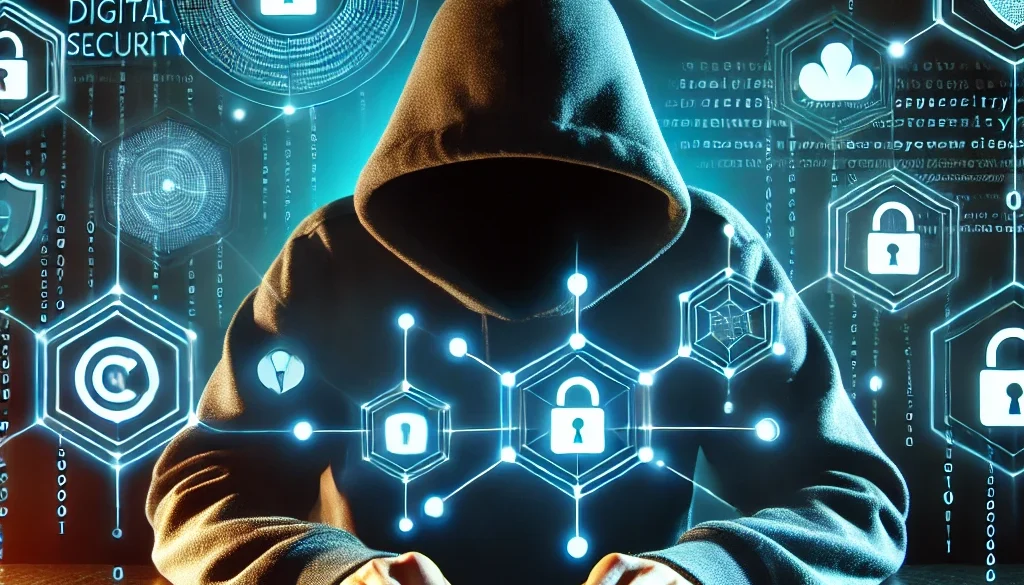🔐 Cybersecurity & Ethical Hacking: Protecting Your Digital World
Introduction
In an era dominated by digital transformation, cybersecurity and ethical hacking have become critical pillars in safeguarding data, privacy, and financial assets. Cyber threats, including data breaches and phishing attacks, continue to evolve, making it essential to understand cybersecurity tools, hacking techniques, and protection strategies. This article explores these aspects, shedding light on the dark web, malware analysis, and online privacy.
Understanding Data Breaches
A data breach occurs when unauthorized entities gain access to sensitive information, often leading to financial and reputational damage. Some of the most notable data breaches include:
Facebook (2019): Exposed personal data of over 530 million users.
Yahoo (2013-2014): Affected 3 billion accounts, one of the largest breaches in history.
Equifax (2017): Exposed financial data of 147 million users.
Common Causes of Data Breaches:
Weak Passwords: Easily guessed or reused passwords.
Phishing Attacks: Deceptive emails trick users into revealing credentials.
Insider Threats: Employees leaking or mishandling data.
Malware & Ransomware: Malicious software exploiting system vulnerabilities.
Unsecured Networks: Public Wi-Fi and outdated security protocols.
Hacking Techniques: Ethical vs. Malicious
Hacking can be categorized into ethical hacking (defensive) and malicious hacking (offensive). Ethical hackers, also known as white-hat hackers, help organizations detect vulnerabilities and strengthen security, while black-hat hackers exploit weaknesses for personal gain.
Common Hacking Techniques:
Phishing Attacks: Fake emails and websites trick users into sharing sensitive information.
Man-in-the-Middle (MITM) Attacks: Intercepting communications between users and services.
SQL Injection: Exploiting database vulnerabilities to access stored information.
Denial-of-Service (DoS) Attacks: Overloading systems to disrupt services.
Zero-Day Exploits: Attacking software vulnerabilities before patches are released.
Essential Cybersecurity Tools
To counter cyber threats, individuals and businesses rely on cybersecurity tools such as:
Firewalls: Protect networks from unauthorized access.
Antivirus & Anti-Malware: Detects and removes malicious software (e.g., Norton, Bitdefender, Malwarebytes).
VPNs (Virtual Private Networks): Encrypts online activities to enhance privacy (e.g., NordVPN, ExpressVPN).
Password Managers: Securely store and generate strong passwords (e.g., LastPass, 1Password).
Endpoint Detection & Response (EDR): Advanced monitoring for endpoint security (e.g., CrowdStrike, SentinelOne).
Phishing Awareness & Protection Tips
Phishing is one of the most common and dangerous cyber threats. Recognizing and avoiding phishing scams is crucial.
How to Identify Phishing Emails:
Suspicious Sender: Check email addresses carefully.
Urgent or Threatening Language: Beware of emails pressuring immediate action.
Poor Grammar & Spelling: Phishing emails often contain errors.
Fake Links & Attachments: Hover over links to check their legitimacy before clicking.
How to Protect Yourself:
Enable Multi-Factor Authentication (MFA): Adds an extra layer of security.
Do Not Click Suspicious Links: Verify sender identity before interacting.
Keep Software Updated: Security patches fix vulnerabilities.
Use Security Awareness Training: Educate employees about cyber threats.
Monitor Financial Statements: Detect fraudulent transactions early.
The Dark Web & Malware Analysis
The dark web is a hidden part of the internet often associated with illicit activities, including the sale of stolen data, hacking tools, and malware. Cybercriminals use it to conduct illegal transactions anonymously.
Understanding Malware Analysis:
Malware is a broad term for software designed to disrupt, damage, or gain unauthorized access to systems. Common types include:
Viruses & Worms: Self-replicating programs that spread across networks.
Trojans: Malware disguised as legitimate software.
Ransomware: Encrypts data and demands payment for decryption.
Spyware: Secretly collects user data without consent.
Protection Strategies:
Regularly update antivirus software.
Avoid downloading software from untrusted sources.
Use intrusion detection systems (IDS) and network monitoring.
Implement strict access controls and least privilege principles.
Conclusion
Cybersecurity and ethical hacking are essential in the fight against cyber threats. By understanding data breaches, hacking techniques, and cybersecurity tools, individuals and businesses can better protect their digital assets. Awareness of phishing scams, the dangers of the dark web, and malware analysis further strengthen our ability to navigate the digital world safely. Stay vigilant, stay informed, and stay secure!




April 16, 2025 @ 10:58 am
ghO HQnthseJ RHWwJnxH UyAp QolnF
June 7, 2025 @ 5:13 pm
This article highlights the growing importance of cybersecurity and ethical hacking in today’s digital age. It’s fascinating how cyber threats like phishing and malware continue to evolve, making it crucial for everyone to stay informed. The emphasis on tools like antivirus software and intrusion detection systems is practical and useful. However, I wonder if the article could delve deeper into how individuals can identify phishing attempts more effectively. The mention of the dark web is intriguing—could you elaborate on how it impacts everyday users? Overall, the article is a great reminder to stay vigilant, but I’d love to hear more about real-life examples of ethical hacking in action. What steps do you think are most effective for businesses to protect their data?
June 10, 2025 @ 11:03 am
In today’s digital age, cybersecurity is more important than ever. I found it fascinating how the article highlights the constant evolution of cyber threats and the need for proactive measures. The emphasis on phishing and malware really drives home the importance of staying vigilant. I think the suggestion to update antivirus software and avoid untrusted sources is practical but often overlooked. The dark web section was intriguing—I wonder how much of it is truly understood by the general public. Do you think education about cybersecurity should be mandatory in schools or workplaces? Lastly, I appreciated the call to stay informed and secure, but how can we ensure everyone takes these steps seriously? What’s your take on this?
June 13, 2025 @ 1:56 pm
Interesting read! Cybersecurity is indeed a pressing issue in today’s digital age. I appreciate how the article breaks down complex topics like phishing, malware, and the dark web into digestible insights. However, I wonder if the article could have gone deeper into specific real-world examples of data breaches to make it more relatable. Also, how effective are intrusion detection systems in preventing sophisticated attacks? I’d love to hear more about the balance between ethical hacking and privacy concerns. What’s your take on the ethical implications of hacking, even when it’s for a good cause? Lastly, do you think small businesses are doing enough to protect themselves, or is cybersecurity still seen as a luxury?
We’ve integrated libersave into our regional voucher system. It’s amazing how easily it brings together various providers on a single platform.
June 17, 2025 @ 6:43 am
In today’s digital age, cybersecurity and ethical hacking are undeniably crucial for protecting our data and privacy. The article does a great job of highlighting the evolving nature of cyber threats like phishing and malware. I appreciate the practical advice on using antivirus software and intrusion detection systems, but I’m curious—how can individuals without technical expertise better identify phishing attempts? The mention of the dark web is intriguing; could you explain how it directly impacts everyday internet users? Overall, the article is informative, but I’d love to see more actionable tips for non-tech-savvy people. What steps can small businesses take to implement these cybersecurity measures without breaking the bank?
Wir haben libersave in unser regionales Gutscheinsystem eingebunden. Es ist toll, wie einfach man verschiedene Anbieter auf einer Plattform bündeln kann.